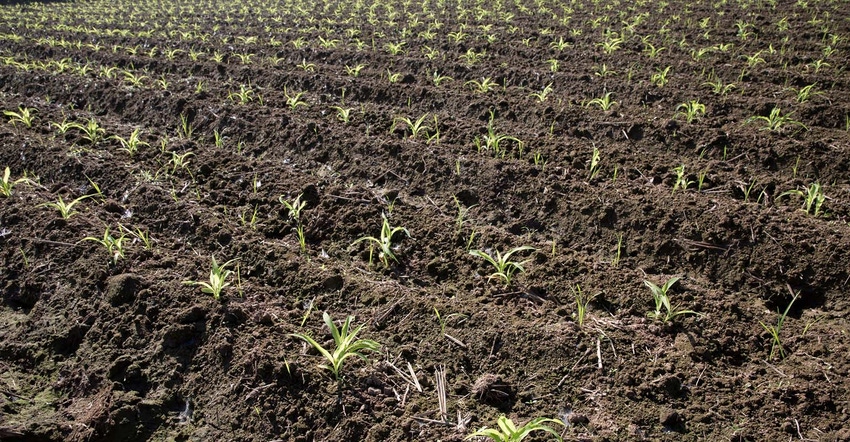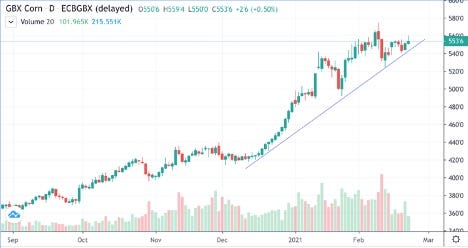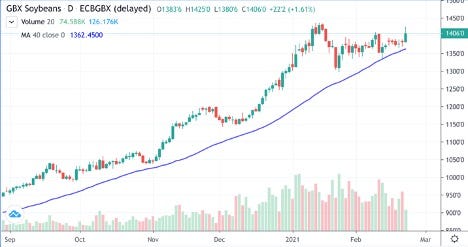
USDA announced at their annual outlook forum that their 2021/22 estimates for total acreage of corn, wheat and soybeans rose to 227.0 million acres from last year’s 218.3 million. That compares to an average trade guess of 228.0 million acres.
I do not think that these estimates were any surprise to the trade. As prices have risen along with tightening U.S. balance sheets, all major crops are profitable giving farmers more than one profitable crop option for the first time in several years.
Prevent plant acres?
What farmers intend to plant and what they actually get planted has been impacted by 10.2 million acres in Prevented Planting claims last year and 19.6 million acres in 2019. It is my perception that the added acres would come primarily from the plains and Western Corn Belt that are most threatened by La Nina.
Much of the Western Corn Belt will be going into the season with little to no subsoil moisture as water resources were used up to finish the crop last August. Had we gone into last year’s growing season in the same situation that we will be going into 2021, the 2020 crop would have gone from being a disappointment to a disaster. Therefore, more acres alone will not ensure that balance sheets will expand.
We need above trendline yields to even attempt to add bushels to carryover stocks. USDA says that we will plant 7 million more acres of soybeans. At 50 bpa, that generates an additional 9.5 MMT that China could easily scoop up.
Corn acres were at the low end of the range of trade estimates while soybeans acres hit the middle of expectations. USDA corn upped corn acres to 92.0 million acres vs 90.819 million last year. A combined 182 million corn/soybean acres would set a new record high above 180.4 million previously.
What about wheat?
USDA estimated all wheat planted area of 45.0 million acres by USDA vs 44.349 mil last year. That is under their previous baseline estimate for this year’s acreage of 46.0 million. The average market expectation was for 45.3 million (42.0-47.0 million range). USDA’s spring wheat acreage estimate was for 13.009 million acres vs last year’s 13.934 million.
USDA projected cotton acres at 12.0 million acres vs 12.093 million last year. Wheat and cotton will have to fight to hold acreage from corn and soybeans. Cotton continues to push higher, which could continue to buy more acres. It is now within a stone’s throw of the June 2018 high set at $0.9650.
The daily chart for March Corn seems to have developed an upward support level as you can see in the image below. By following this trendline, bulls would have found solid buying opportunities at the 5.25 level. For those that are bears, closing below this line would be the first indication that markets are beginning to break down.

Soybeans make it even easier to find support levels using the 40-day Moving Average. Prices have not dropped below this line since last August. Trading below this level could be a signal of a major correction.

Matthew Kruse is President of Commstock Investments and can be reached at [email protected].
Futures trading involves risk. The risk of loss in trading futures and/or options is substantial and each investor and/or trader must consider whether this is a suitable investment. Past performance is not indicative of future results. Trading advice is based on information taken from trades and statistical services and other sources that CommStock Investments believes to be reliable. We do not guarantee that such information is accurate or complete and it should not be relied upon as such. Trading advice reflects our good faith judgment at a specific time and is subject to change without notice. There is no guarantee that the advice we give will result in profitable trades.
The opinions of the author are not necessarily those of Farm Futures or Farm Progress.
About the Author(s)
You May Also Like






